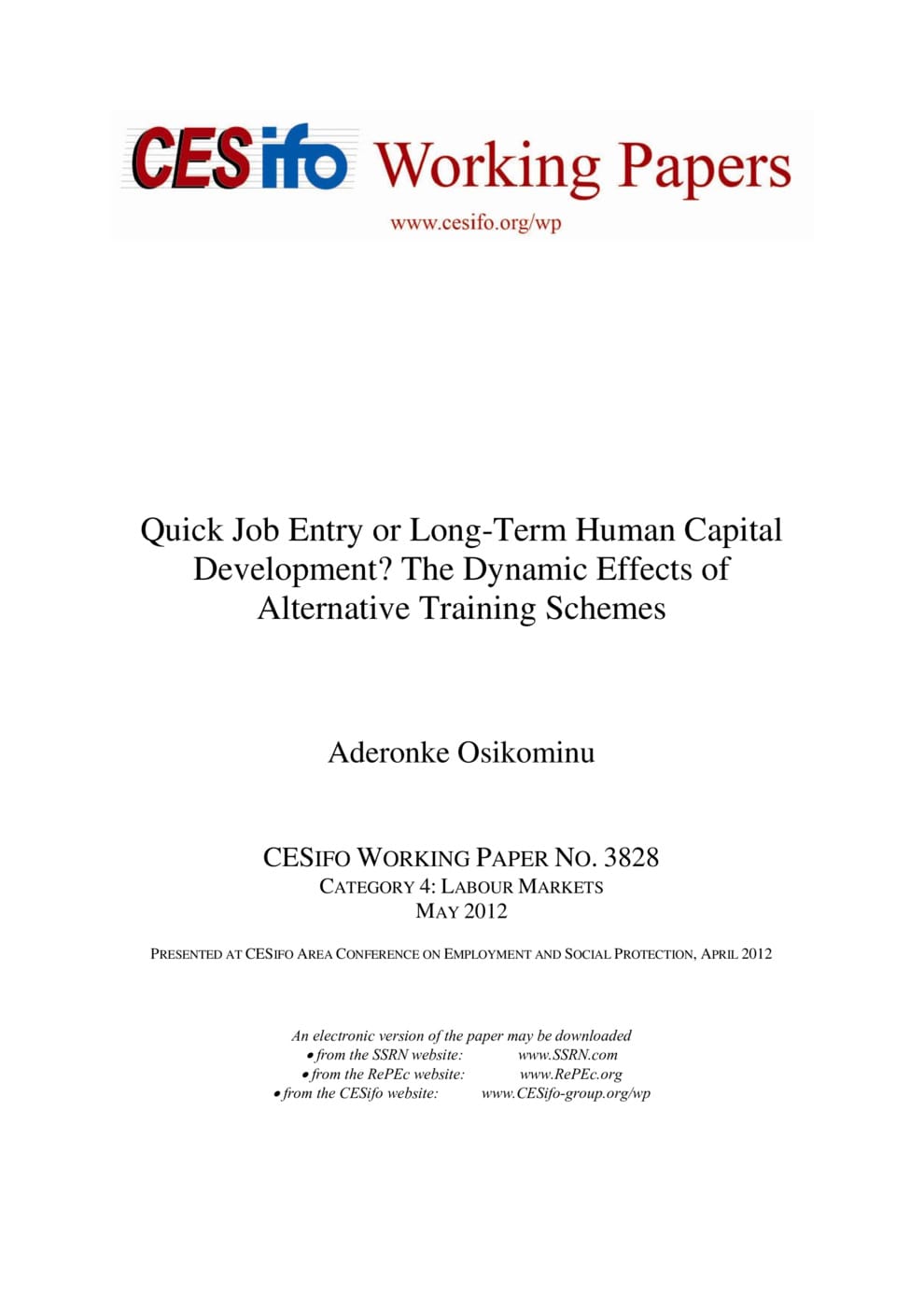Quick Job Entry or Long-Term Human Capital Development? The Dynamic Effects of Alternative Training Schemes
CESifo, Munich, 2012
CESifo Working Paper No. 3828

This paper investigates how precisely short-term, job-search oriented training programs as opposed to long-term, human capital intensive training programs work. We evaluate and compare their effects on time until job entry, stability of employment, and earnings. Further, we examine the heterogeneity of treatment effects according to the timing of training during unemployment as well as across different subgroups of participants. We find that participating in short-term training reduces the remaining time in unemployment and moderately increases job stability. Long-term training programs initially prolong the remaining time in unemployment, but once the scheduled program end is reached participants exit to employment at a much faster rate than without training. In addition, they benefit from substantially more stable employment spells and higher earnings. Overall, long-term training programs are well effective in supporting the occupational advancement of very heterogeneous groups of participants, including those with generally weak labor market prospects. However, from a fiscal perspective only the low-cost short-term training schemes are cost efficient in the short run.
Trade Policy